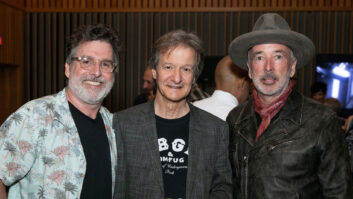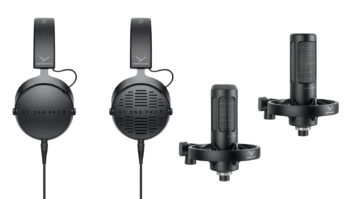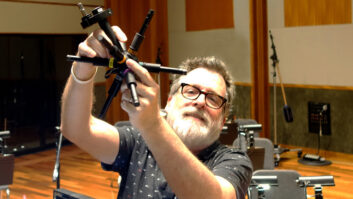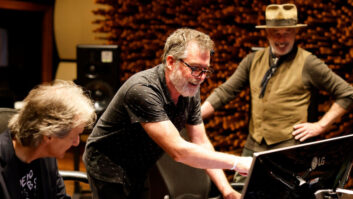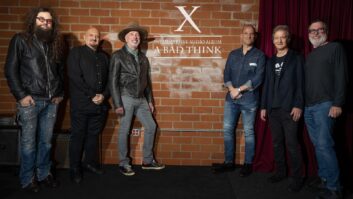Los Angeles, CA (December 12, 2022)—A Bad Think’s new release, X, is the first album to be mixed by Bob Clearmountain in Dolby Atmos for the musical project, which is led by singer, songwriter and multi-instrumentalist Michael Marquart.
X is the tenth studio album from A Bad Think and was co-produced and co-engineered by Grammy-nominated artist Marquart and multi-Grammy-winning producer/engineer Dave Way. The album was mixed in both stereo and Dolby Atmos by multi-platinum award-winning producer/engineer Bob Clearmountain, who mixed the last three A Bad Think albums, and mastered in stereo by multi-Grammy winner Bob Ludwig and in Dolby Atmos by multi-Grammy winner Brian Lucey.
“I try to just get a balance before I send the tracks to Bob,” Way says of his production process. “I don’t add any plug-ins to the instruments. The only thing that might have a plug-in on it is the vocal, and that has some reverb, a small amount of delay, and maybe a little bit of EQ. That’s about it. All the other tracks are totally dry. And that’s what I send to Bob. I’m really not trying to achieve a mix on my end, as that is Bob’s area of expertise!”
“The musicianship is just outstanding, with great guitar sounds,” Clearmountain says. In addition to Marquart, the line-up includes Kirk Hellie and Rusty Anderson on guitars, Phil Shenale on keys, Whynot Jansveld on bass and drummer Matt Chamberlain.
X Marks the Spot for Audio Pros
Marquart and Way gave him free rein with the mixes, Clearmountain reports, offering occasional notes. “The main mix is always the stereo one, and I’m kind of working on the Atmos mix in the background,” Clearmountain says. “I do both at the same time on my analog SSL desk. And so I’ll be doing the stereo, managing the imaging of the left and right channels, and I’ll get clear ideas about the Atmos placement, but it is all based on the stereo mix. I am able to work from the routing buses on my desk — I have a whole group of them that I use for the Atmos channel assignment, so I’m basically able to accomplish that while I’m doing the stereo.”
He adds, “For the Atmos mix, I was able to start with the normal way I would handle drums in a stereo mix, and then take things like room mics and put them in the back or in the overheads. And it’s nice nowadays if you have more than one pair of stereo tracks for the ambiance, but there should at least be a stereo pair. Sometimes a client gives me a mono drum ambiance mic, which is annoying to me because it doesn’t make any sense, as we all have two ears. And so why would you have ambiance in mono? In the real world, ambiance is always stereo.”
